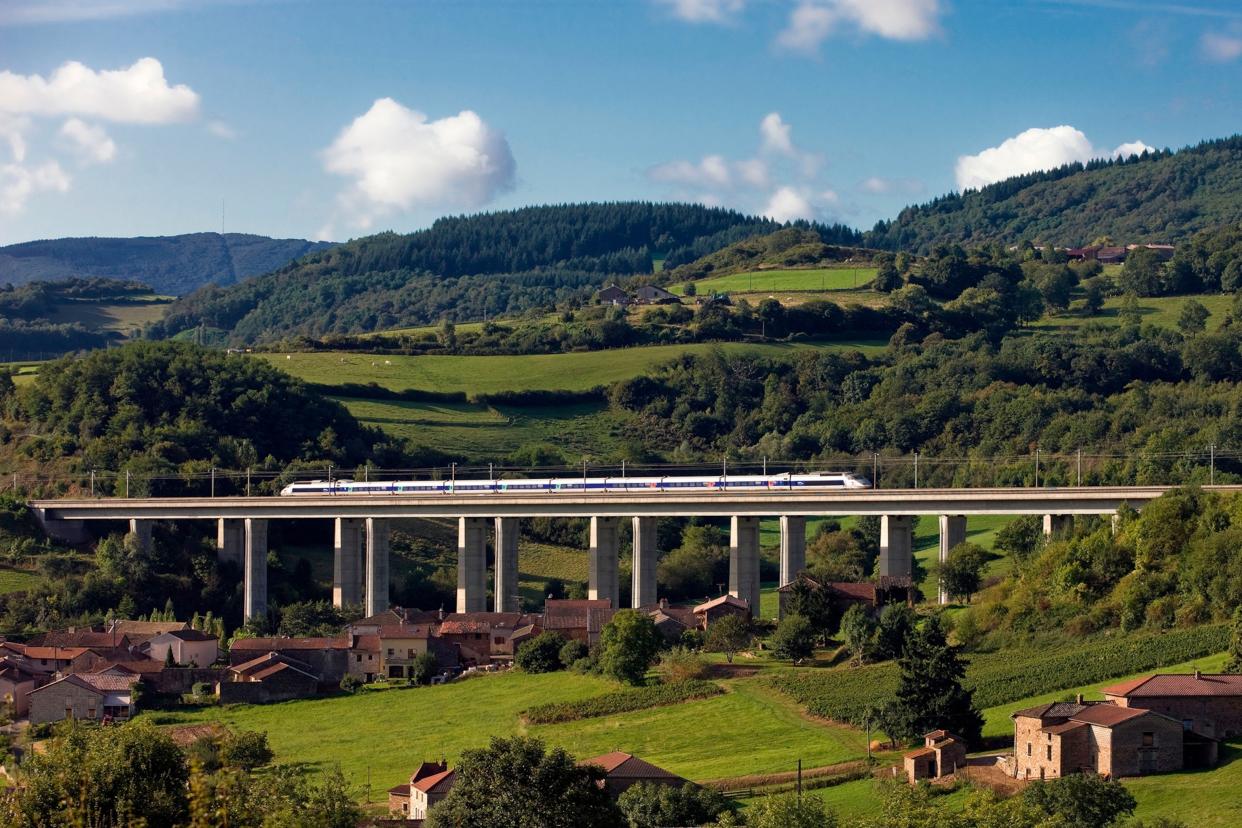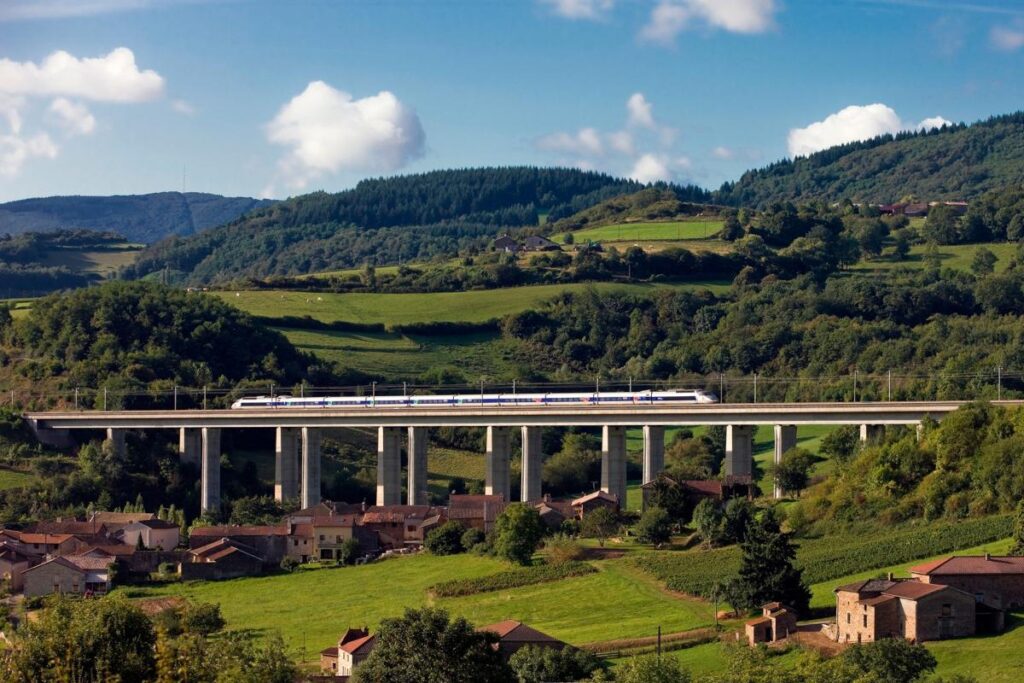
This article is produced by National Geographic Traveler (United Kingdom).
In Europe, there has been investment in new lines that should move people faster and increase capacity. As a result, several new high-speed routes have opened in recent years. Here are a few to look out for.
1. Spain: Madrid-Gijón
Spain has been a leader in high-speed rail for the past 20 years, despite economic problems along the way. It celebrated the opening of a new 213-mile line between Madrid and the northern principality of Asturias in 2023, following the completion of a 30-mile stretch of mostly tunnels – including one 15 miles long – running through the Cantabrian Mountains. Experts believe the line will increase train arrivals in Asturias from 230,000 to 600,000 a year. The journey to Gijón takes 3h42m. Tickets with Renfe Avlothe Spanish no-nonsense service, costs from £44.
2. France: LGV Sud Europe Atlantique


The opening in 2017 of a new line between Tours and Bordeaux was a game-changer for travel to the southwestern wine region. Journey times between the two cities were cut by around 50 minutes, making Paris-Bordeaux possible in 2h3m. The TGV services are operated by both SNCF inOui (from £45), the premium brand, and its budget sibling Ouigo (from £17). The latter have non-reclining seats, no buffet and no first class. Plans to extend the route to Toulouse and the Spanish border are shelved, with a 2029 opening now optimistic.
3. Spain: Madrid-Galicia line
It took 20 years to build, but in 2021 the 270-mile line connecting the capital to Ourense in Galicia opened. The final 64-mile section between Pedralba de la Pradería and Taboadela features 32 viaducts and 31 tunnels. Trains can travel at up to 205mph, cutting journey times from 1h28m to just 2h30m. New ‘next-generation’ Talgo Avril rolling stock debuted on the line earlier this year and features back-of-seat entertainment and a buffet car, although the ‘ironing board’ seats have drawn complaints. Cards from £18.
4. Germany: Berlin-Nuremberg Line
The aim of VDE 8 (Verkehrsprojekt Deutsche Einheit Nr. 8) was to shorten the journey time between Berlin and Munich, pitting the train against the car and the plane. More than 230 kilometres of new track were laid, 27 tunnels were bored and 37 viaducts were built, reducing the journey time by 2h30m. The high-speed trains with a speed of 300 km/h now connect the two junctions in less than four hours. The entire line, which opened in 2017, took more than 26 years to plan and build. The ICE trains have dining cars, a bar and Wi-Fi. Cards from £43.
5. Turkey: Ankara-Sivas Line
One of the most important rail projects to open in the past decade is the 250-mile Ankara to Sivas The line was completed last year, cutting journey times from almost six hours to 2h30m. It features 49 tunnels and 53 viaducts, and trains can travel at speeds of up to 155mph. New Siemens Velaro rolling stock has been ordered for the line, which will feature first, business and economy carriages, as well as a bistro and seat-back entertainment (in first). Six more new lines are planned, and earlier this year funding was secured for an 87-mile line between Yerköy and Kayseri, which will connect to the Ankara-Sivas line.
6. Spain: New operator of Madrid-Córdoba/Sevilla
Launched in 2022, Iryo is a newcomer to Spain’s high-speed network, competing with Renfe, the national operator. It is well established on Madrid to Zaragoza and Barcelona, which helps keep prices down, and has now started services between the capital and Cordoba (1h47m) and Seville (2h33m). It is part-owned by Trenitalia, Italy’s state-owned railway company, and uses the same Frecciarossa rolling stock. This is a budget service, but Iryo has won praise for its on-board food service, including tapas and Spanish wines. Tickets from £20.
7. France: Ski train to the Alps
Eurostar is expanding its ski train services this winter, although the number of trains is significantly lower than pre-pandemic levels. Passengers will board at London St Pancras and then change trains in Lille before heading south to the Alps. The train stops at Albertville, Moutiers and Bourg-Saint-Maurice, from where skiers can reach France’s largest ski resorts, including Les Trois Vallées and Paradiski. The journey takes around seven hours. Latest statistics show that just 2% of skiers took the train to the Alps last season, down from 6% before the pandemic. The service will run on Saturdays and Sundays from 21 December until the end of February. Cards from £139.
Published in the October 2024 issue of National Geographic Traveler (United Kingdom).
To subscribe to National Geographic Traveler (UK) magazine click here(Only available in certain countries).







